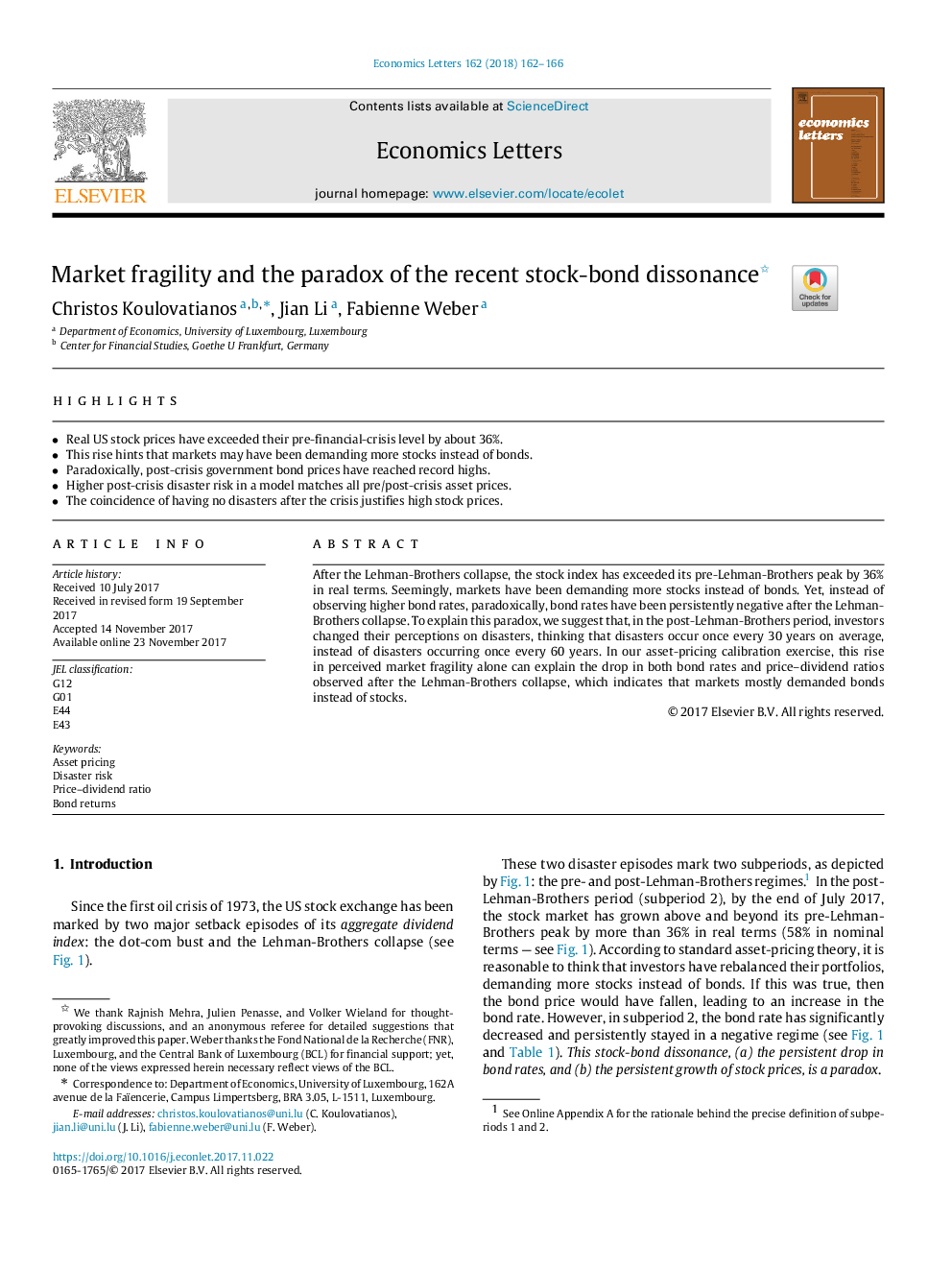| Article ID | Journal | Published Year | Pages | File Type |
|---|---|---|---|---|
| 7349632 | Economics Letters | 2018 | 5 Pages |
Abstract
After the Lehman-Brothers collapse, the stock index has exceeded its pre-Lehman-Brothers peak by 36% in real terms. Seemingly, markets have been demanding more stocks instead of bonds. Yet, instead of observing higher bond rates, paradoxically, bond rates have been persistently negative after the Lehman-Brothers collapse. To explain this paradox, we suggest that, in the post-Lehman-Brothers period, investors changed their perceptions on disasters, thinking that disasters occur once every 30 years on average, instead of disasters occurring once every 60 years. In our asset-pricing calibration exercise, this rise in perceived market fragility alone can explain the drop in both bond rates and price-dividend ratios observed after the Lehman-Brothers collapse, which indicates that markets mostly demanded bonds instead of stocks.
Related Topics
Social Sciences and Humanities
Economics, Econometrics and Finance
Economics and Econometrics
Authors
Christos Koulovatianos, Jian Li, Fabienne Weber,
